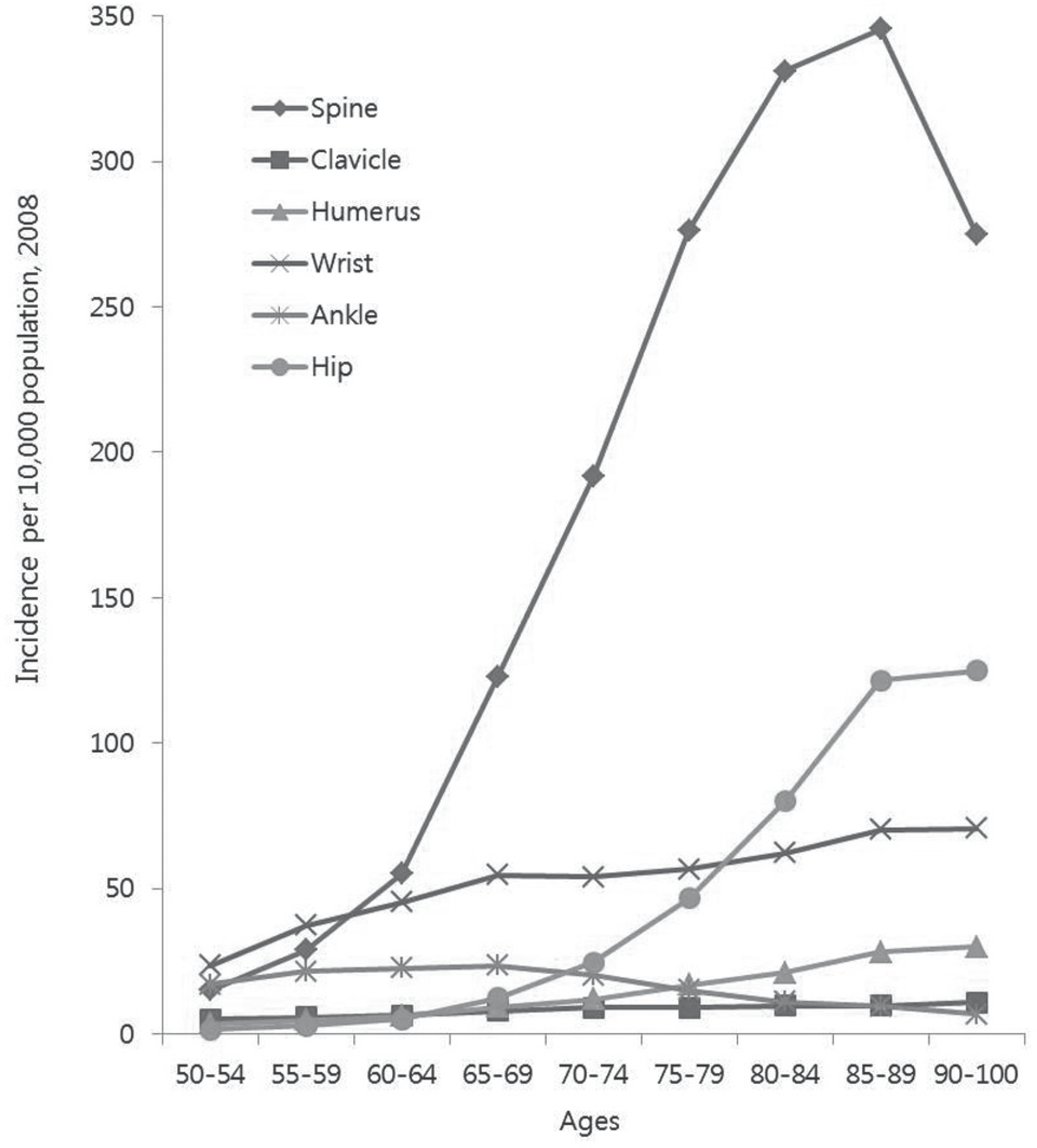Abstract
Study Design
Review of the literature on the epidemiology and importance of osteoporotic spinal fractures.
REFERENCES
1. An KC. Nonoperative Treatment of Osteoporotic Vertebral Compression Fracture. J Korean Fract Soc. 2009; 22:218–23.

2. Alexandru D, So W. Evaluation and management of vertebral compression fractures. Perm J. 2012; 16:46–51.

3. Elderly statistics 2014 [Internet]. Daejeon (Korea): Korea national statistical office. 2014. – [cited 2014 Sep 26]. Availabe from:. http://kosis.kr/ebook/.
5. Lindsay R, Silverman SL, Cooper C, et al. Risk of new vertebral fracture in the year following a fracture. JAMA. 2001; 285:320–3.

6. Klotzbuecher CM, Ross PD, Landsman PB, et al. Patients with prior fractures have an increased risk of future fractures: a summary of the literature and statistical synthesis. J Bone Miner Res. 2000; 15:721–39.

7. Van Helden S, Cals J, Kessels F, et al. Risk of new clinical fractures within 2 years following a fracture. Osteoporos Int. 2006; 17:348–54.
8. Haentjens P, Autier P, Collins J, et al. Colles fracture, spine fracture, and subsequent risk of hip fracture in men and women. A meta-analysis. J Bone Joint Surg Am. 2003; 85-A:1936–43.
9. Kang HY, Kang DR, Jang YH, et al. Estimating the eco-nomic burden of osteoporotic vertebral fracture among elderly Korean women. J Prev Med Public Health. 2008; 41:287–94.

10. Shin A, Choi JY, Chung HW, et al. Prevalence and risk factors of distal radius and calcaneus bone mineral density in Korean population. Osteoporos Int. 2004; 15:639–44.

11. Korean health behaviors and statistics in chronic disease survey in 2012 [Internet]. Cheongju (Korea): Korea centers for disease control and prevention;2013 – [cited. 2013. Dec 1]. Availabe from:. http://www.cdc.go.kr.
12. Jang S, Park C, Jang S, et al. Medical Service Utilization and medication with osteoporosis. Health Insurance Review & Assessment Service. 2010.
13. Shin CS, Kim MJ, Shim SM, et al. The prevalence and risk factors of vertebral fractures in Korea. J Bone Miner Metab. 2012; 30:183–92.

14. Roux C, Fechtenbaum J, Kolta S, et al. Mild prevalent and incident vertebral fractures are risk factors for new fractures. Osteoporos Int. 2007; 18:1617–24.

15. Gardner MJ, Demetrakopoulos D, Shindle MK, et al. Osteoporosis and skeletal fractures. Hss J. 2006; 2:62–9.

16. Cauley JA, Thompson DE, Ensrud KC, et al. Risk of mortality following clinical fractures. Osteoporos Int. 2000; 11:556–61.

17. Hasserius R, Karlsson M, Jonsson B, et al. Longterm morbidity and mortality after a clinically diagnosed vertebral fracture in the elderly—a 12-and 22-year followup of 257 patients. Calcif Tissue Int. 2005; 76:235–42.
Figures and Tables%
Fig. 1.
Incidence of osteoporosis-related fractures according to the site for Koreans 50+ years of age. Data from the 2008 Health Insurance Review and Assessment Service.12)

Table 1.
The Lifetime Risk of Osteoporosis-related Fractures in Korea. Data from 2008 Insurance Review & Assessment Service.12)




 PDF
PDF ePub
ePub Citation
Citation Print
Print


 XML Download
XML Download